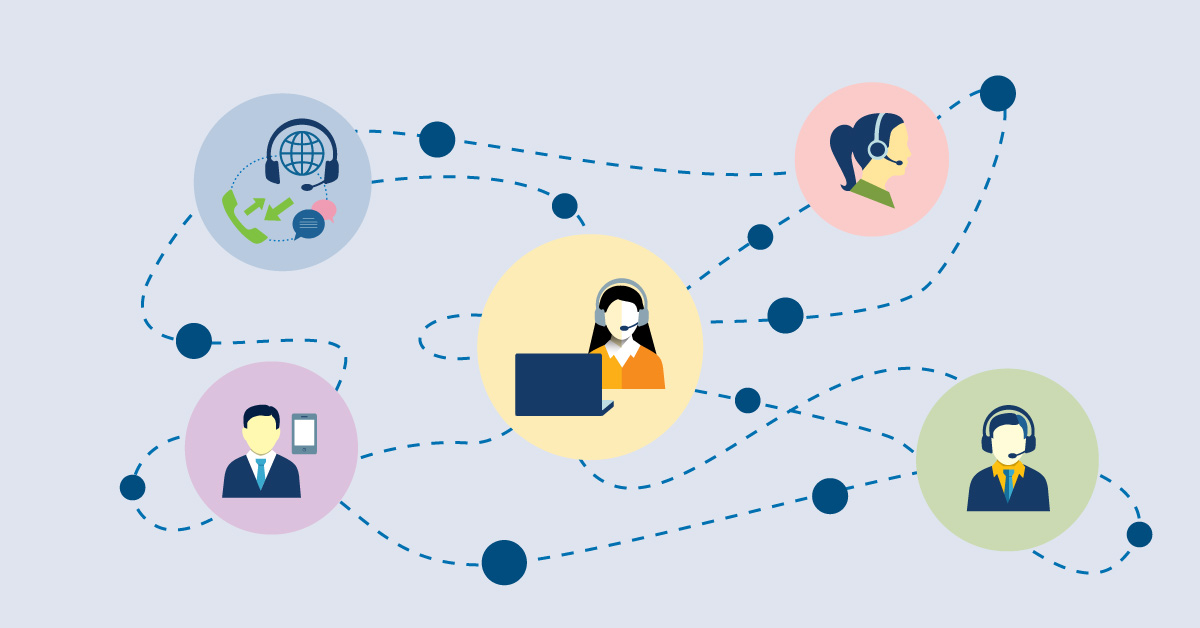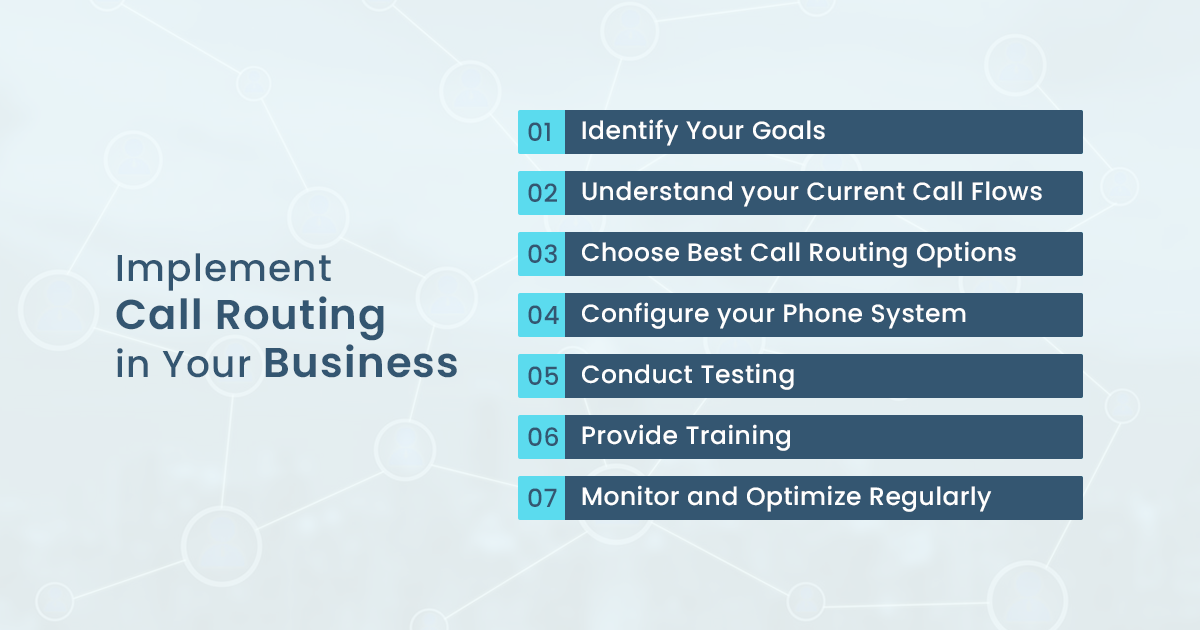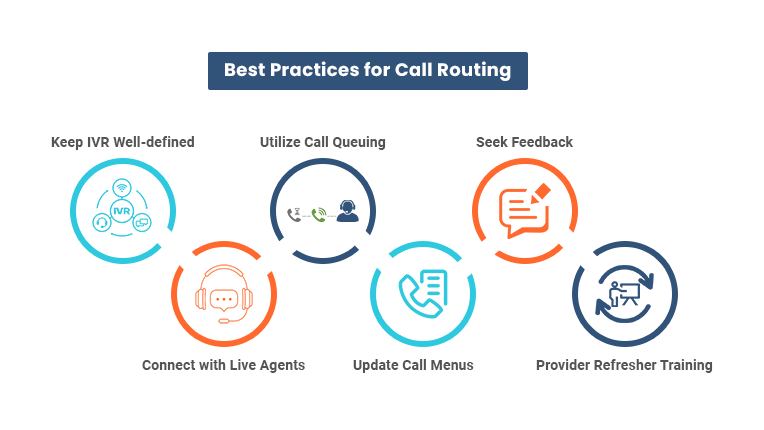
July 18, 2022

July 18, 2022
What could be the biggest nightmare for a business? It is when a customer calls a business and reaches a dead end rather than getting an answer to their query. Mostly, it happens as the caller gets connected to the wrong department or agent. But it is important to realize that even one such call could mean losing a billion-dollar opportunity. So what should a business do to avoid its customers ending up with the wrong agents? The simple answer to this problem is Call Routing.
Starting a business, one might not give a thought about call routing. There are several other areas that need attention. But as the business grows up, the inbound call traffic increases, and the need to manage these calls becomes an urgent priority. In such a situation, Call Routing is an effective service that comes as a core function of a business phone system.
Table of Contents
As the name suggests, Call Routing is a function that directs incoming calls to a business’s specific department or agent. It does so based on certain conditions such as the query of the caller, skills of the agent, time and day of the week, etc.

In simple words, call routing software captures call data such as the query of the caller, and determines the correct recipient for it. It works on the basis of preset rules and filters. An IVR system i.e. Interactive Voice Response plays a crucial role in this process. It presents the caller with the varied available options to choose from.
Typically, there are 3 phases associated with the call routing process, as mentioned below:
Call routing systems are also known as Automatic Call Distributors (ACD) as they work to automatically distribute inbound calls.
Suppose you want to call an online clothing brand regarding the delivery of your order. You dial the toll-free number mentioned on their website. The auto-attendant presents you with several options: Buying Assistance, Discounts, and Coupons, Payment/ Refund Queries, Help with your Account, Order, and Delivery Status, etc.
You press the number for Order and Delivery Status. The call routing system will direct your call to an agent who handles these queries.
One of the major reasons why businesses must use call routing software is that phone calls are still a popular choice when customers want to connect with a business. In other words, people like to talk to a real person when they have a query or concern with a business. When this happens, it is simply imperative to ensure that customers’ concerns are addressed and resolved as quickly as possible. Call Routing plays a crucial role in patching callers with the right agents and thus increases the probability of quick resolution.
We have often mentioned DID numbers that businesses or organizations purchase from their phone service providers and assign these numbers to individual agents or departments, which are called extensions. So when a customer dials a DID number, they are directly connected to the individual agent and need not interact with a receptionist or call attendant. So in other words we can say that DID is a technology used by businesses to direct customer calls directly to specific agents. You can read our blog on Why is Direct Inward Dialing (DID) Important For Your Business?
As the term suggests, ACD calls routing automatically distributes customer calls to the most suitable agents or departments by making use of a rule-based routing strategy. ACDs are extremely useful for businesses where call volumes are large and need to be handled efficiently. The routing engine considers several factors such as the skills of the agent, customer data, previous interactions, and AI-based behavioral profiles to patch customer calls with the right call center agents.
IVR or Interactive Voice Response is a method used by businesses wherein they provide callers with pre-recorded menu options. Choosing appropriate options, callers can navigate through the menu to get the desired information or resolution to their queries.
Skill-based routing is a methodology used by call centers to direct customer calls to support agents based on the skills, knowledge, and experience of the agents. For example, if a query arrives for a specific product of the business, then the call will be patched with an agent who specializes in providing support for that particular product.
This type of routing method is based on the time of the day. Using this feature businesses can define where calls get directed during different times of the day. One example could be that if a customer from the east coast calls at a time when the office is closed, then the call gets redirected to the office on the west coast. Another example could be that the calls arriving after business hours i.e. during the evenings, when no agents are available, are simply directed to voicemail. Here’s a blog on After Hours Business Voicemail Greetings Ideas that you can read.
Also called location-based routing, geographic routing is a routing method where incoming calls received by the call center or the business are sent to specific sites based on the location of the caller.

The time duration for which a customer has to wait on call puts a direct impact on customer satisfaction rate. As per statistics, in 2021, customers spent an average of 46 seconds waiting for call centers to answer their calls. And 28% of these callers disconnected before they could speak to a business representative. Call Routing significantly reduces the waiting time that callers have to experience before they are connected to an agent.
Lack of agent availability can also lead to missed calls and voicemails. Studies tell that 80% of all business communications take place over the phone. Imagine the number of calls a business receives in a day. With call routing, callers have the privilege to connect with agents instantly which means the number of voicemails and missed calls will get automatically reduced.
Today’s buyers are more aware than ever before. Their buying journey involves different steps. These exploring solutions, comparing vendors, and then making the purchase. At each step, they may seek help from customer support by talking to agents. Call Routing ensures that buyers have their queries resolved in the best possible way. This increases the potential for more sales thus benefiting the business.

84% of customers say they’re more likely to stick with a brand that treats them like a person, not a number. Using call routing software, calls are distributed according to the skills of the agent and requirements of the caller which increases the probability of more satisfied customers.
By adopting Unified Communications (UC) Phone system, businesses can experience wonderful improvements. Studies tell that businesses can see a 52% improvement in workplace productivity with UC. This further results in a 25% increase in operating profit. Call routing helps employees in taking more calls per day which means they can get more work done on a daily basis. Read our blog on How to Measure & Increase Call Center Productivity?
 It is evident that call routing is an important step in achieving the desired customer service and streamlining the communication processes. Below mentioned are the key steps you can follow to implement call routing in your business:
It is evident that call routing is an important step in achieving the desired customer service and streamlining the communication processes. Below mentioned are the key steps you can follow to implement call routing in your business:
Your goals behind call routing can be many but it is important to define them. Figure out whether you want to route calls on the basis of language preferences, needs of the caller, etc.
It is crucial to analyze your current call flow to understand the type of incoming calls received by your business. This helps in deciding how and where the calls should be routed.
Basis your understanding of the above two points, you can determine the best call routing options. We have already mentioned the different types of call routing strategies including IVR, ACD, Skills-based, time-based, and geography-based routing.
Now you can set up your phone system and set up the required call routing. You can get in touch with your service provider for any assistance you may need.
It is important to test your call routing system before you deploy it. You can try calling from different test phone numbers to make sure that calls are routed properly and correctly.
It is time to train your teams on how to handle calls according to the newly implemented call routing flow. Familiarize them with new routing options, IVR menus, and their call-handling responsibilities.
By performing regular monitoring of the call routing flows you can collect useful data related to call volume, customer feedback, etc. Analyzing this data, you can figure out the areas of improvement within your business.

Well-organized and concise IVR menus are an important step to ensure smooth call routing. Keep menu options to a limited number and always make sure that the language is simple to understand.
Providing customers with an option to connect with a live agent is always a good idea. This way customers remain assure that they have someone to provide resolution as a last resort.
It is a good practice to update callers with estimated wait time and their queue position when they are put on hold before connecting with a live agent.
Frequently update your call menus in accordance with the operating hours for the holidays, festivals, and any events.
Getting feedback from your callers is one of the best ways to ensure that your call service is up to the mark. Ask customers about their experience with call routing to understand their pain points and areas of improvement.
You should provide comprehensive training to your agents and employees on a regular basis about any changes that have been made to the call routing process.
As explained above, call routing comes as a core function with today’s cloud business phone systems. So you can look for a reliable business phone system that offers this feature.
KloudTalk offers an advanced set of communication features for businesses to add more efficiency to their call flow. Intelligent Call Routing and Management is a highlighting feature offered by KloudTalk that makes use of Artificial Intelligence. It works on a different set of algorithms and considers various aspects of calling. These include caller priority, previous inquiries by the same caller, customer value, agent skills, etc.
The primary purpose of call routing is to direct customer or incoming calls to the most suitable agent or department within an organization.
Call Routing can be customized for different departments within a business or an organization. For example, calls related to sales are directed to the sales department. There are several parameters based on which calls can be routed to different departments such as skills of the agents, time and availability, time, etc.
There are different types of technologies involved in the call routing process. To name a few - Interactive Voice Response, Automatic Call Distributor, Call Queueing, etc.
Note – This post was updated with latest information on 29-06-23.
Top Heading
4460 Views 0 Comments